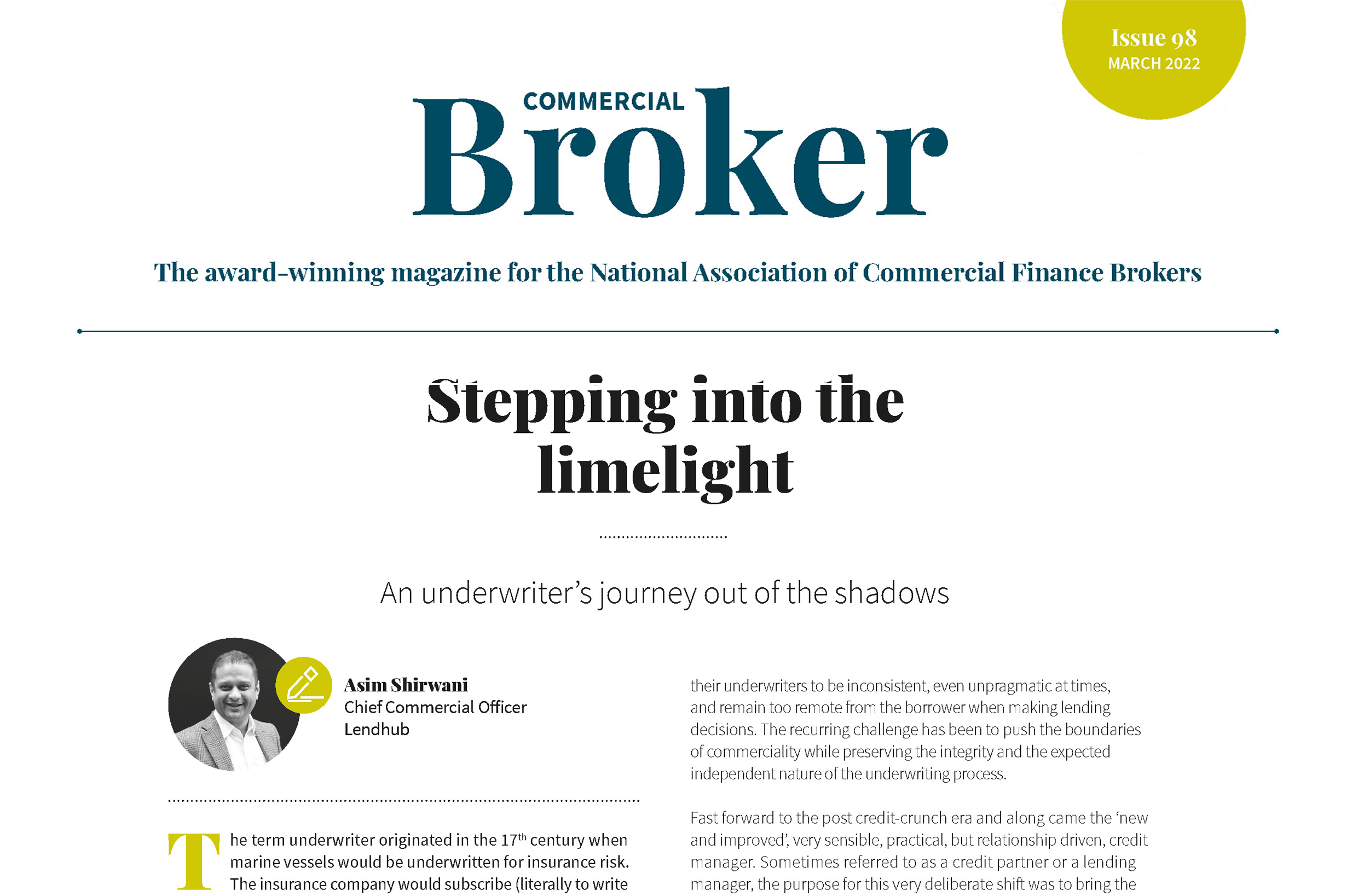
Asim Shirwani, Chief Commercial Officer at Lendhub, writes for NACFB's Commercial Broker Magazine about the emergence and present role of the modern underwriter.
The term underwriter originated in the 17th century when marine vessels would be underwritten for insurance risk. The insurance company would subscribe (literally to write underneath or underwrite) the policy by signing their name at the bottom of the document and acknowledging consent that the policy was in force. Things were much simpler back then.
These days, however, some of the job adverts I see for underwriting roles feel like they are looking for someone with industry expertise and extra-terrestrial powers all rolled into one. So, is it right to expect our underwriters to be relationship managers, case managers, credit managers and portfolio managers? I believe the opinion is firmly divided on this point.
Gone are the days when your typical credit underwriter was someone towards the end of their career, poised in the knowledge that they’ve both seen and done it all. Having previously been on the front line, they knew every trick in the book when assessing a credit application, namely, how to spot and pre-empt issues, which often resulted in a prevalent modus operandi where the default position was to say no, unless convinced otherwise.
Over the last decade or so, lenders gradually realised that they needed to wake up and smell the coffee, that they could no longer afford for their underwriters to be inconsistent, even unpragmatic at times, and remain too remote from the borrower when making lending decisions. The recurring challenge has been to push the boundaries of commerciality while preserving the integrity and the expected independent nature of the underwriting process.
Fast forward to the post credit-crunch era and along came the ‘new and improved’, very sensible, practical, but relationship driven, credit manager. Sometimes referred to as a credit partner or a lending manager, the purpose for this very deliberate shift was to bring the underwriter out from the shadows and into the limelight to work alongside expedient business development folk.
Constant technological advancements into process efficiencies have meant the underwriters are able to instantaneously retrieve reliable information they need on the security, but they still must assess and evaluate the counterparty risk – this is where the modern underwriters earn their stripes. Historically this was done via handovers with heavy reliance on the front line capturing and relaying data effectively – some of you may even remember the travel packs! There is none of that these days, most lenders have done away with periodic credit committees and have given their underwriters the power and autonomy to liaise directly with the intermediary or the borrower to act as the first line of defence.
Whether it is for quick bridges or term facilities, being a loan underwriter in this new world is challenging. Their involvement through the life of a loan, particularly on development finance arrangements, never changed. They must remain engaged throughout, monitoring progress, looking for warning signs and making sensible decisions when drawdown requests come in – so, no rest for the not so wicked.